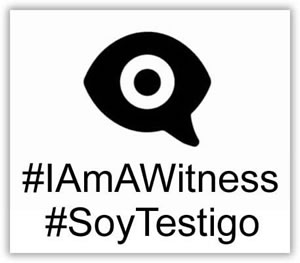Different non-governmental organizations and non-profit associations have managed to establish May 2 as the World Day of Bullying Prevention. It emerged in 2013 as an initiative of the organization Bullying sin fronteras in Argentina and has been celebrated since then. Some countries have formalized the commemoration of this day, as is the case of Spain, through this institutional declaration by the Senate.

The problem of bullying has worsened in recent years in an exceptional way. The expansion in the use of connected mobile phones and social networks among children and young people has made the problem considerably worse.
Currently, bullying does not end when leaving school as it happened just a few years ago. Harassment, insults, lies, threats, coercion, messages ridiculing the victim, etc. They continue without rest all the time and in any digital environment they can use.
What children suffer now has been called “cyberbullying“, a phenomenon much more harmful than the harassment of yesteryear. The persecution and harassment of the victim occurs at any time and in any of the electronic means of communication that they habitually use. In addition, the phenomenon usually occurs in a more or less “public” way, since it is usually carried out in a group way using social networks or WhatsApp groups.
The effects are so important in the behavior of children that there are many cases that have had a fatal outcome. Some years ago we mentioned in this post some shocking cases of boys and girls who opted for suicide, anguished
The situation, far from having improved, is still dangerous and very disturbing at present. Hence the importance of training of or raising awareness among children and the dissemination of this initiative to reach the largest number of people, related or not with education.
From here we join the media that give visibility to this movement and commemorate the World Day of Bullying Prevention by providing some ideas that can help the victims.
How to combat cyberbullying
-
- Freephone number in Spain, launched by the Ministry of Education, to offer help in cases of bullying:
- 900 018 018. Calls to this number are free, anonymous and leave no trace on telephone bills
- 600 909 073. Number corresponding to a Telegram channel with this same purpose.

- Application for phones. The Ministry of the Interior also puts an application for mobile phones at our disposal with which we can report any criminal act of which we are witnesses to the Security Forces. Among others, we can find a specific section for reporting bullying. The application is called AlerCops and is available for both Android and iPhone.
- Freephone number in Spain, launched by the Ministry of Education, to offer help in cases of bullying:

-
- IAMAWITNESS emoticon. It has its origins in a campaign initiated by theAd Council for the fight against cyberbullying and is designed so that people who are witnesses can offer support to the victim, while warning the harasser that they do not approve of their behavior. Available on the list of icons of all the usual phones.

Some advice in a case of cyberbullying
- Show support and confidence to the victim, preventing feelings of guilt and empowering communication. If you collaborate openly it will be easier to put an end to the problem, otherwise you might try to hide part of the evidence.
- Convincing them to act as soon as possible, letting time pass, remaining passive, will not solve the problem.
- Collect the evidence before it can be eliminated by the harasser. They will consist of recorded chat conversations, published images that can be downloaded or screenshots, etc. Here we must say that if we want to collect all available evidence we must talk to specialized personnel, because in addition to the easily visible data in the pages and images, other valuable data for research can be downloaded, such as the metadata of the photos and it should be done by people with the right skills.
- Inform the school about the case of cyberbullying, communicating it to the tutor and the center’s management so that they follow up and apply the corresponding protocol that every school must have.
- The fight against cyberbullying must be done ‘in a group’, that is to say, the harassed person must be protected in addition to their family, by the teachers and by his group of friends. It is necessary to promote in peers the feeling of rejection towards cyberbullying.
- If the harassment does not stop, there is no way to dialogue or simply the harasser cannot be located, it is necessary to report it to the police. The Group of Telematic Crimes (GDT) of the Civil Guard facilitates the complaint process through a form that is filled out and then presented at the police station.
It is better not to have to resort to all these measures, but we know that there are times when there is no other solution.
Let us remember the real case that a father spoke to us about through this interesting blog and published a while ago, where he describes how he had to act to put an end to the cyberbullying suffered by his own daughter.
However, the best advice we can give is prevention. From the point of view of the victim, he must understand that he must never respond to provocation. And regarding the harasser, besides inculcating values of respect and empathy, it will not hurt to teach him that cyberbullying is considered a crime and that the Law can make a minor criminally liable from the age of 14.
